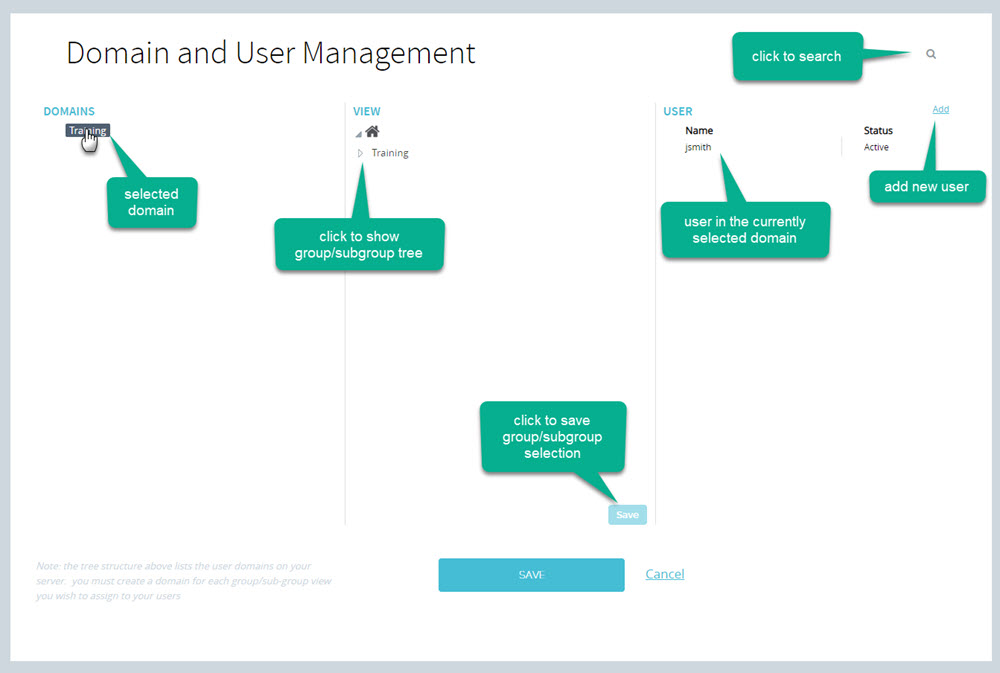Creating user accounts
Click here for the Administrative features tutorial video.
User accounts are specific to each domain.
To create a new user account, start by opening the Domain and User Management window, then follow these steps:
1. Click on the domain, or sub-domain where you wish to create the new user account.

2. Next, you have two options. Either right-click under USER > Name and select New or click the Add link in the right column.
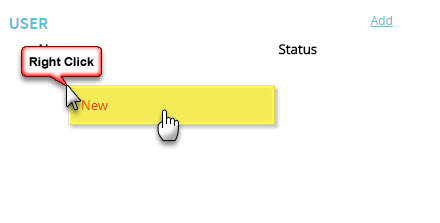
3. The User Account window will open.
The user account window is split into 3 sections:
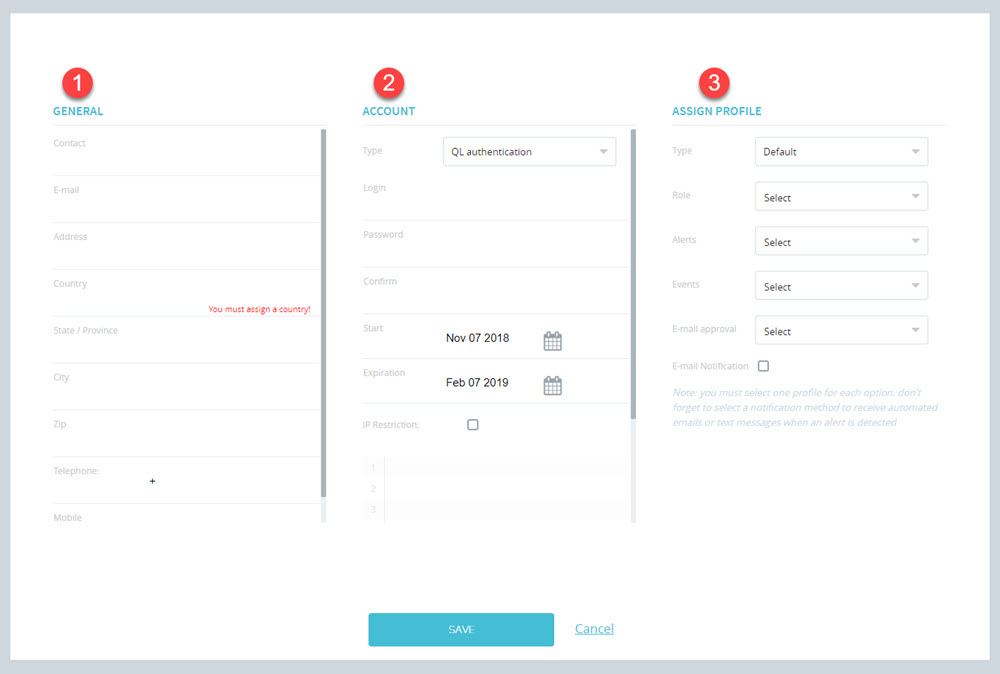
1. GENERAL
This section is where you enter the user’s contact information. These fields are all optional, however you need to enter an email address if you want this user to receive automated email notifications. NOTE: You must assign a country name to the account otherwise you cannot create one.
2. ACCOUNT
This section is mandatory.
1. Account Type: Here is where you select the type of notification to use when logging in the user. The default is QL authentication.

QL authentication means QL server will authenticate the user based on their login name and password as configured in QL.
Active Directory authentication is reserved for corporate AD users. When selecting this option, users won’t have to enter a password if they are already logged into AD. Users still require a QL account, but there is no separate password to enter. Only the login name will be required. Once the login name has been entered, click the TEST button to confirm the information.

ADFS (Active Directory Federation Services) is used for “single sign-on” access on corporate networks.
2. Account Login: Enter a login name for the user. Alphanumerical and special characters are supported (for example, name@company.com is a valid user name).
3. Password and Confirm fields: If QL authentication is selected, enter a password for the new user account and then confirm the password in the next field. Passwords much match. Passwords must have 8 characters and a mix of numbers and text. Special characters are also supported.
An error will appear if your password or confirmation fail to meet the requirements.
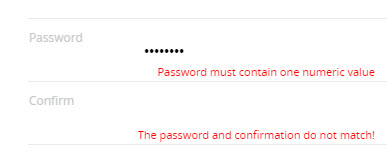
4. Start and Expiration dates: User accounts have a start and expiry dates. By default, all new user accounts expire after 3 months. To extend the expiry date, edit the date directly in the field or use the built-in calendar to select a date. To create a “permanent” account, simply enter a date far in the future (ex. June 13, 2100).

Selecting dates with the calendar:
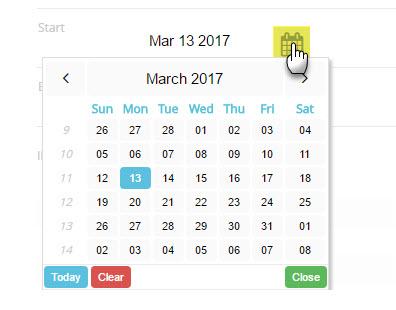
5. IP Restriction: IP restriction is used to restrict user logins to a physical location, by entering one or more IP addresses in the fields provided. By default, IP restriction is OFF so to turn the feature ON, you must check the option box. Next, you enter each IP address you wish to restrict access from. Once this feature is enabled, this user will only be able to login from that address.
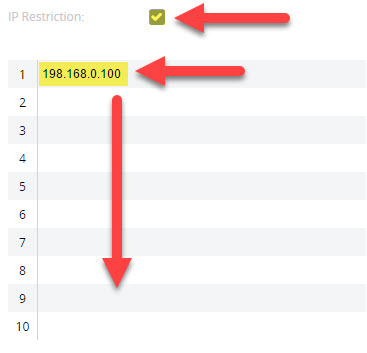
NOTE: Wildcards are supported (ex. 198.186.0.*). This is so you can restrict access to a network segment and not a specific IP.
This feature is useful if you want to prevent someone from logging in from outside the company’s office (like, from home).
To let users login from any location, leave this option unchecked.
Assign Profile
This section has five options (the first four are mandatory).
1. Type: The default option indicates this account will have access to the entire QL content manager interface. When you select Datafeed user interface, the user will only be able to access the Data Feed Manager. They will be able to edit QL Server data feeds to which they have been given access, but they won’t be able to access any other QL Content Manager feature.
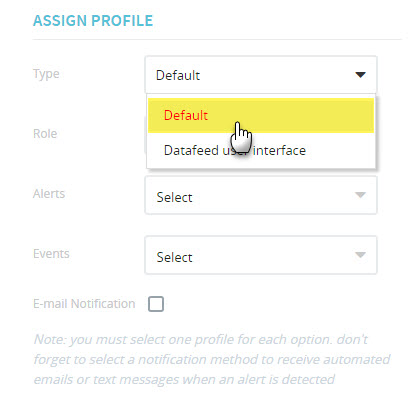
2. Role: The role menu lets you select from a list of user profiles currently programmed on the server.
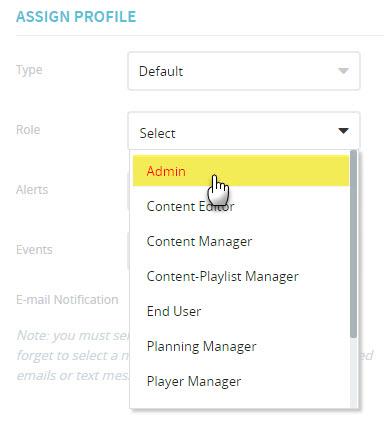
Navori QL Cloud users have access to a series of pre-programmed user roles that control various user rights. These roles are administered by Navori.
For example, Admin is an administrator profile that can create other user accounts. End User is a profile you assign to someone who needs to have his/her content approved by another user (someone like a Power User or Content Editor). There are several user profiles available to QL Cloud customers.
Click here to view the complete list of all the user rights assigned to each QL Cloud user rights profile.
NOTE: QL 2.0 on premise software administrators can also create their own custom roles. Click here to find out more.
3. Alerts: The alert profile determines the type of alert information that will be shown in the QL Content Manager UI, and sent out by email (if applicable). QL Cloud users can pick one of 4 options: All Alerts, Content Related Alerts, Short Alerts, and Technical Alerts. Users who have the “content related alert” profile will only see these specific alerts. They won’t be notified of any technical issue.
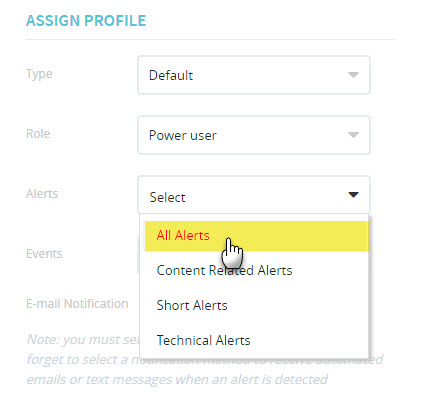
NOTE: QL 2.0 on premise software administrators can also create their own custom alert profiles.
4. Events: The event profile determines the type of event information that will be shown in the QL Content Manager UI. QL Cloud users can pick one of 4 options: All Events, Content Related Events, Management Events, and Technical Events. Users who have the “content related event” profile will only see these specific events. They won’t be notified of any technical event.
Users who are assigned the “management events” profile will be notified when there is content waiting for approval in their content library.
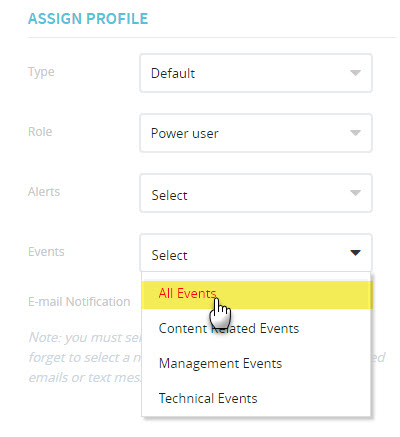
NOTE: QL 2.0 on premise software administrators can also create their own custom event profiles. Events are only shown in the monitoring details window (accessible by selecting players, clicking Monitoring and then clicking the line representing individual players).
5. Email approval: Use the pull-down menu to select the email account of the QL Server Administrator. This is the person who will receive content approval notification requests. This setting is optional.
6. Email notification: Clicking this option will enable email notifications from QL Server. These are alert messages sent automatically to users know when an issue requires their attention. Note a valid email address must be provided. This setting is optional.
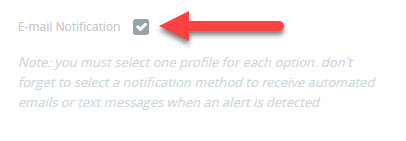
User account example:
Here is how a typical user account looks like:

Here is how you navigate the Domain and User Management window:
